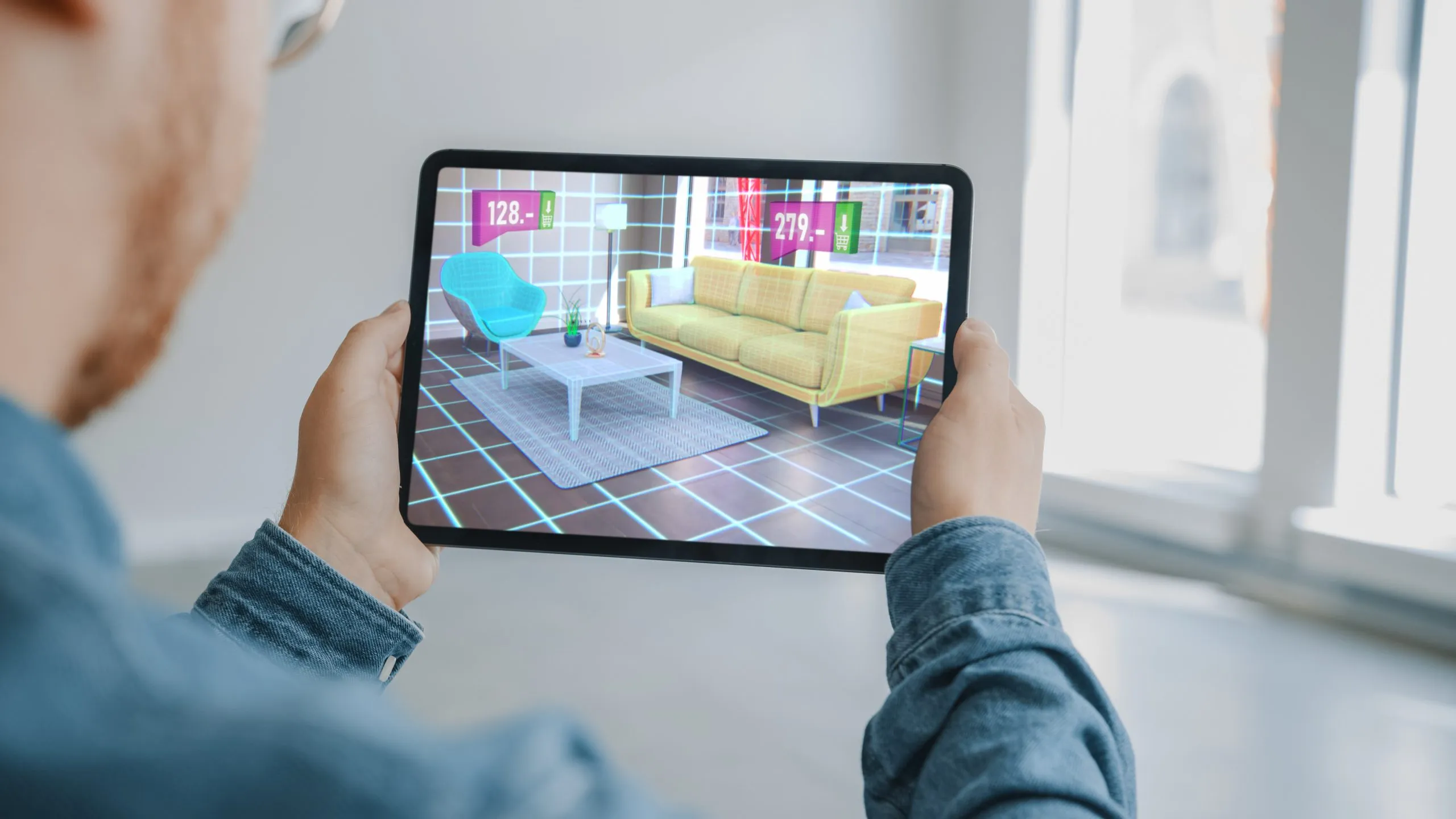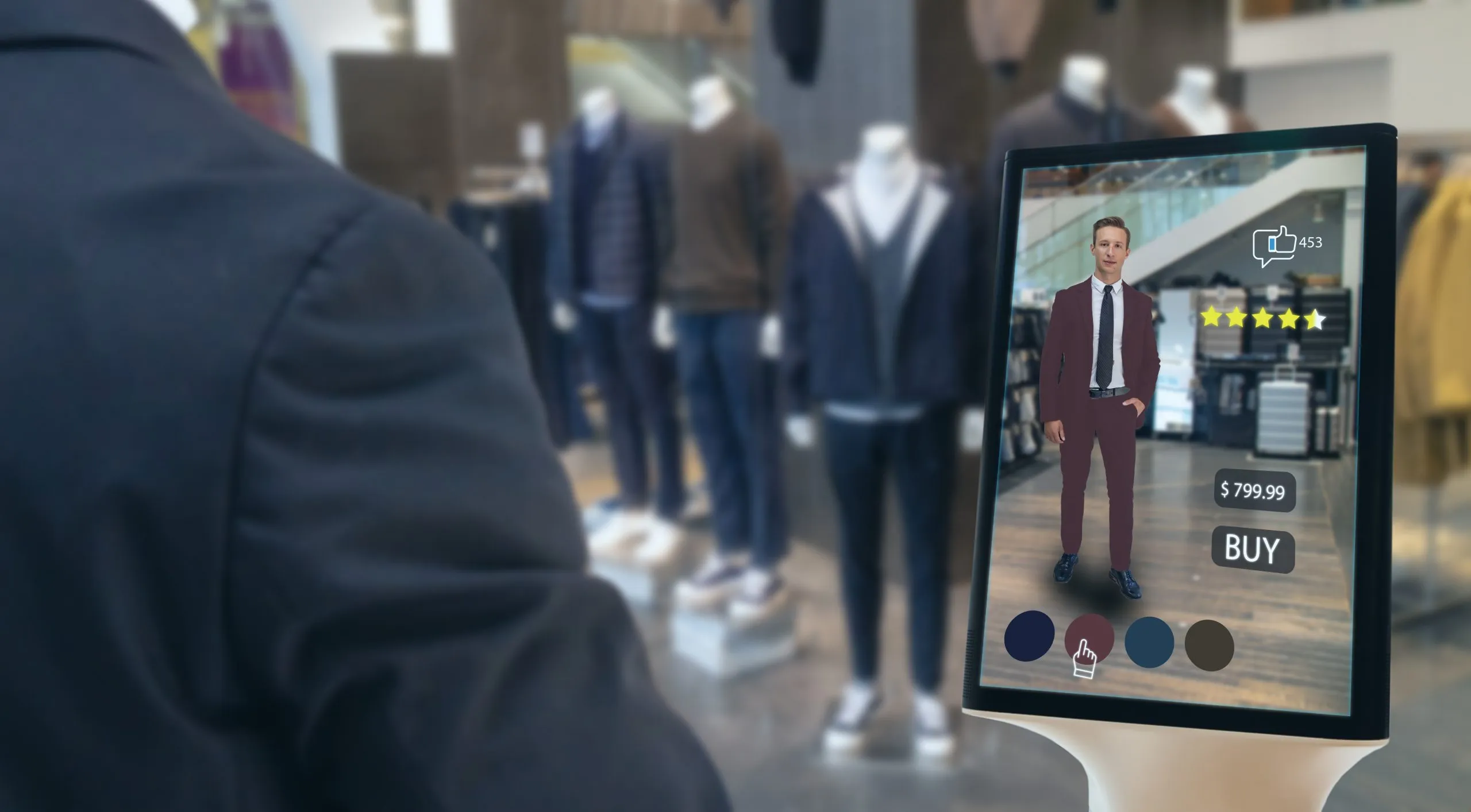Futureproof Your Business with 3D Models

Virtual and Augmented Reality are the future of e-commerce. You can see it everywhere: from Amazon to Warby Parker to Lacoste, companies worldwide are using 3D models and innovative experiences to sell their goods.
The turn towards digital experiences shouldn’t come as a surprise. Foot traffic and in-person events have been declining rapidly—even before the pandemic—and most of these companies were seeking alternatives long before COVID turned business on its head.
In this post, we’ll show you how investing in 3D models will pay off quickly. It will make your business more competitive in the new era of commerce and help you drive more conversions than ever.
The most common implementation of augmented reality allows you to experience a product in your own home or on your body virtually. Amazon has been pushing AR for thousands of items, allowing users to preview products in their homes before purchasing. Similarly, Warby Parker lets you try on glasses from the app so you know the frame will fit you right. You can find similar options from Ikea and Converse.

These digital try-on and demo apps build trust for consumers. They help remove the uncertainty from the purchasing decision. Companies report extreme conversion rate boosts from AR: Lowe’s, for example, claims a 104% conversion rate increase for people who view 3D models on their app.
And now is the right time to get ahead of the trend. The industry isn’t saturated so you can get a sharp competitive edge, and you can get 3D modeling at competitive prices still.
The value of 3D models isn’t limited to online shopping—you can also use them for immersive digital experiences. For example, Richemont created several AR experiences for its subsidiaries to showcase their products in immersive, branded experiences.
Think about in-person popup experiences or product launch parties—they’re meant to generate buzz, grow awareness and build relationships. These digital experiences deliver on the same premises but aren’t limited to geographical areas. They allow people to participate in shared experiences from the comfort of their own homes. If developed correctly, they can incentivize social shares and magic selfies as well. At the center of this experience? Your 3D Models.
All 3D Models aren’t made alike. For example, you might be tempted to use your Revit file for AR. It won’t work. Engineering models have way too many polygons for an AR app – to oversimplify the issue, a phone would rather melt than process a model so complex.
What this means is that 3D modeling requires some degree of artistry. It’s about balancing a reasonable polygon load with the right aesthetic. For you, this means finding the right 3D modeling team—a team that can prioritize what matters while optimizing your files for AR/VR.
Reach out to us at CXR.Agency to see how we can help your business create world-class 3D models at world-class prices.
The need for 3D models isn’t limited to the COVID-19 era. Businesses have been moving towards AR and VR for years. Foot traffic and brick-and-mortars have been in decline for over a decade, and nowadays businesses must compete in a digital marketplace saturated in competitors. 3D models at the outset provide you a competitive edge. They allow you to engage your consumers in ways your competitors probably aren’t.
But 3D models aren’t just about competing. They’re about providing your customers a better user experience. They’re about building trust. Building experiences they’ll remember for years. Investing now lets you get ahead of the curve so you can build foundations that will serve your business for years to come.